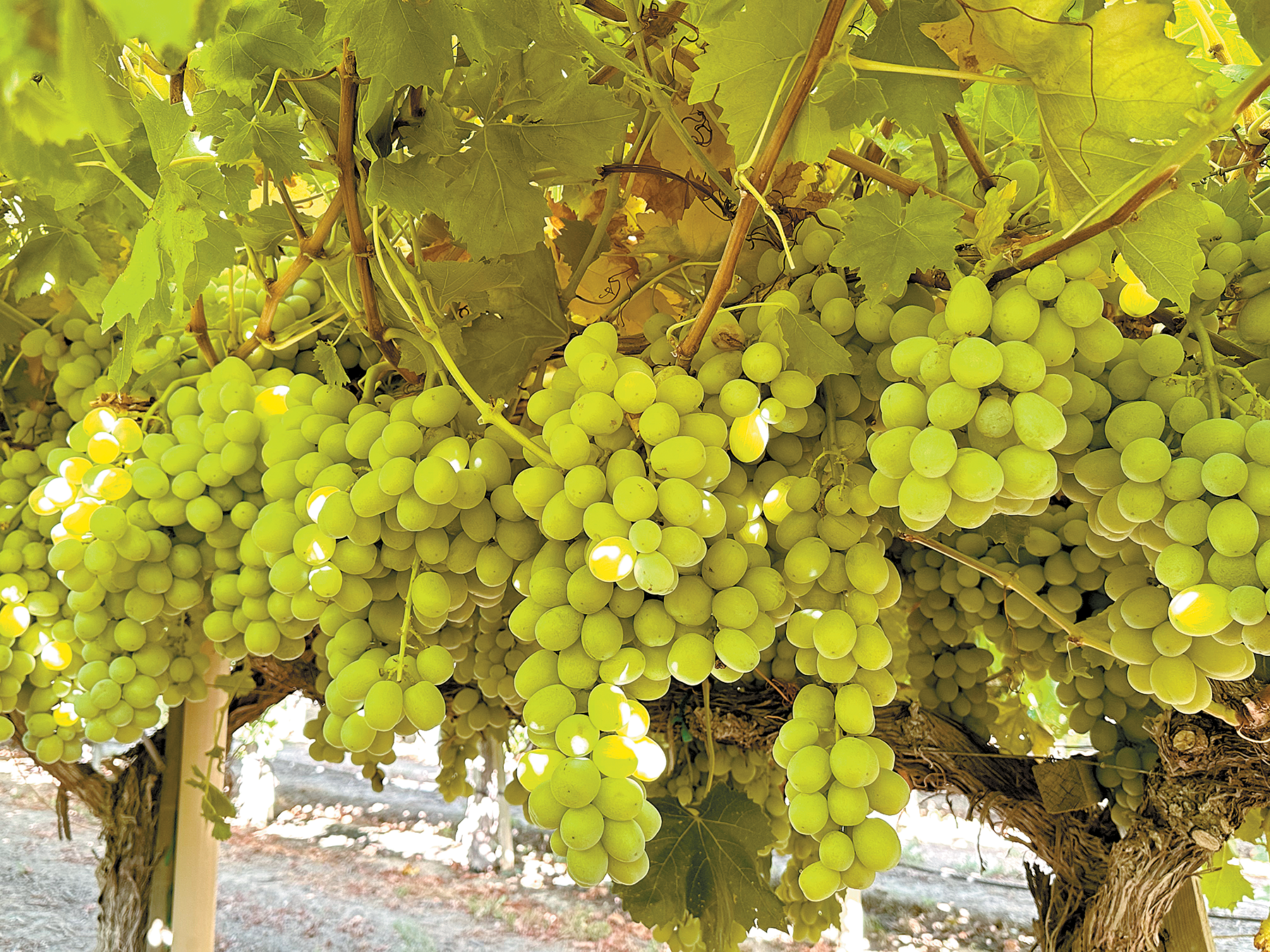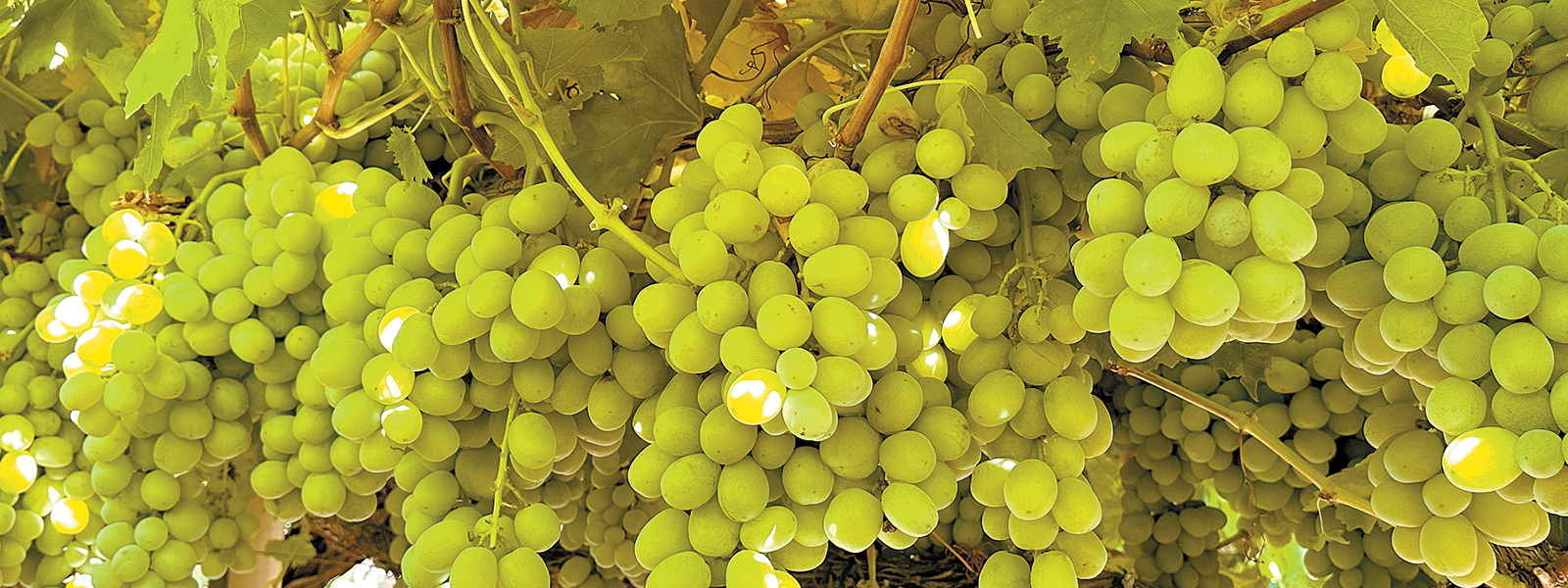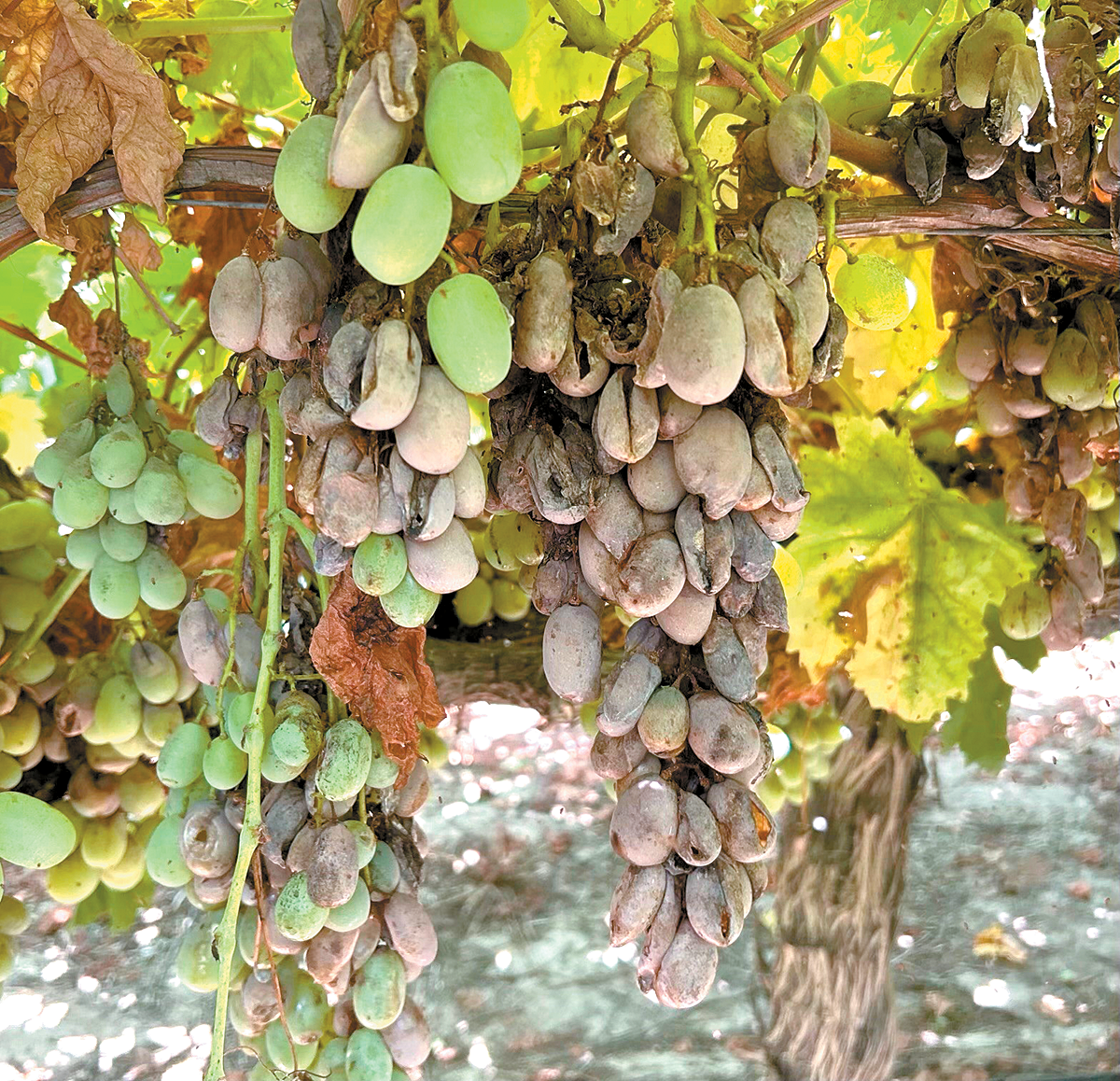Storm devastates table grape crops at peak of harvest

Tropical Storm Hilary hit during peak harvest, destroying an estimated one-third of the unharvested crop, with some growers losing entire vineyards. Some grapes in the valley survived the storm.
Photo/California Table Grape Commission


Photo/Todd Snider
By Caleb Hampton
California table grape growers in Kern and Tulare counties suffered major crop losses last month when heavy rains and strong winds from Tropical Storm Hilary slammed vineyards as they neared the peak of harvest season.
“The impact of the hurricane and its aftermath is devastating and heartbreaking,” Kathleen Nave, president of the California Table Grape Commission, said in a statement.
Hilary, which had been downgraded from a hurricane by the time it reached California on Aug. 21, brought more than a year’s worth of rain to some cities.
With about a third of the crop harvested before the storm hit, the commission estimated the wind and rain damaged 35% of the grapes that remained on vines, or around 25 million boxes. The boxes hold about 21 pounds of grapes each. Others thought the losses could be much higher.
“The magnitude of this loss is not just a few growers,” said Todd Snider, owner of Western Ag Crop Insurance Services, which has surveyed the damage to table grape crops in the region over the past three weeks. He said more than 60 million boxes may have been destroyed. “It’s industrywide,” Snider said.
The crop losses could mean low grape supplies and high prices for U.S. consumers in the coming months. Almost all of the country’s table grapes are grown in California, with 83% coming from Kern and Tulare counties, according to the grape commission. The crop is valued at more than $2 billion annually.
Grape growers in Kern and Tulare counties said the storm came at the worst possible time, pelting hundreds of acres of mature grapes that were set to be harvested.
“I had one field with absolutely gorgeous big bunches. I was just waiting for a little more sugar,” said Mark Hall, director of Grapevine Vineyards, who has grown grapes in Kern County for four decades.
After the storm hit, some of the grapes held up for a couple days. “By the third day, they just melted,” said Hall, who estimated half his acreage was destroyed. In that field, “We didn’t pick a box,” he said.
The wind and rain caused both immediate and gradual damage, cracking some grapes on impact and ruining others with mildew.
“The moisture on the really sweet grapes is what causes the problem,” said Jim Beagle, chief executive officer of Grapery, which grows table grapes in Kern and Tulare counties and lost about a third of its crop to the storm.
Last week, with excess moisture still in some vines, crop losses continued to mount. “It gets a little uglier every day,” Hall said. Since the storm, he has applied fungicides and stopped irrigating to dry out his surviving grapes.
“There is still a lot of fruit out there,” said Nave, the grape commission president, referring to table grape crops across the southern end of the San Joaquin Valley.
But whether those grapes will be sold into the fresh fruit market is in question. Harvesting them will require farmworkers to sift through each bunch and toss out any berries unfit for a produce aisle, raising labor costs for farms.
“If you have clean bunches, it’s really quick,” Nave said. “In a situation like this, the picking is going to be slow while they look at every berry on every bunch.”
Growers and shippers typically negotiate table grape prices on an individual basis with retailers.
“It’s a really dynamic situation,” Beagle said. Last week, he said he was talking with retailers “to find a solution that will allow us to recover harvest costs and allow them to move the fruit through the system without having a price that’s so high to end consumers that it cuts off the demand we need to move the product.”
He said it was still unclear whether finding such a price point was possible. Meanwhile, Hall said retailers balked at the prices he quoted them after the storm. “It would take a really strong market to be able to pay to pick them,” he said.
Growers have a few options for grapes they are unable to sell as fresh fruit, none of which come close to erasing their losses.
One option is to sell the fruit to nontraditional shippers such as gunnysackers who pick the grapes themselves and sell them to buyers that accept lower-quality or cosmetically damaged produce.
Growers get “less than pennies on the dollar” from gunnysackers, said Snider, the crop insurance agent, mainly benefiting “because someone stripped their vines, took all the fruit away and maybe they got a little money.”
Another option is to sell the grapes by the ton to be used for juice or bulk wine, fetching even less for the farmer.
“There will be a large number of growers who will end up harvesting the table grapes for juice or wine,” Snider said, noting that growers would suffer nearly a total loss in such cases. “At that point,” he said, “they’re really only harvesting the grapes to clean the vines and prepare for next season.”
Still, some high value table grapes may be left to rot. “The problem now is that there’s such an abundance of that salvage fruit going to the secondary market for juice that the wineries are going to be full, and they’re not going to have the capacity for it,” Snider said. “There’s only so much room for that product.”
Crop insurance covers 50% to 85% of losses, not including grapes that go unharvested for economic reasons. But growers and industry insiders said they suspect many of the grapes ruined by Tropical Storm Hilary were uninsured.
“There’s a lot of producers who have never suffered damage like this, so they’ve never been concerned enough to want to buy high coverage levels on every variety,” Snider said.
Hall, the longtime Kern County grape grower, said he bought solid crop insurance coverage on some vineyard blocks but only the minimum on the block the storm completely wiped out.
“There’s a very large number of uninsured or underinsured table grape acres,” Snider said.
In some cases, farmers who invested millions of dollars to raise the crop could end up recouping nothing.
It’s a heavy blow to farms and the communities that depend on them. “These are multigenerational family farms with their legacy on the line,” Snider said. “It’s really sad to see a fifth- or sixth-generation farmer be hit with something that hasn’t happened in a hundred years.”
With fewer grapes to harvest this fall, the losses also impact workers who get paid to pick the crop.
“One of the bigger concerns we have as an industry is what the impact is going to be on our farmworkers and the outlying agricultural communities they live in,” Beagle said. “It’s a lot of lost income for a lot of people who count on that income from harvesting the grape crop. Their livelihoods are severely impacted, too.”
San Joaquin Valley almond growers also suffered significant losses from the storm.
According to a preliminary report released by the Tulare County Agricultural Commissioner, hundreds of acres of almonds in Visalia, Bakersfield and Tipton were damaged. “The almonds were shaken and sitting on the ground to dry when the rain came,” Snider said.
In addition, the storm damaged some winegrapes, tree crops and alfalfa.
“This one was just really bad,” Hall said. “It was a lot of water, and it was bad timing.”
(Caleb Hampton is an assistant editor of Ag Alert. He may be contacted at champton@cfbf.com.)




